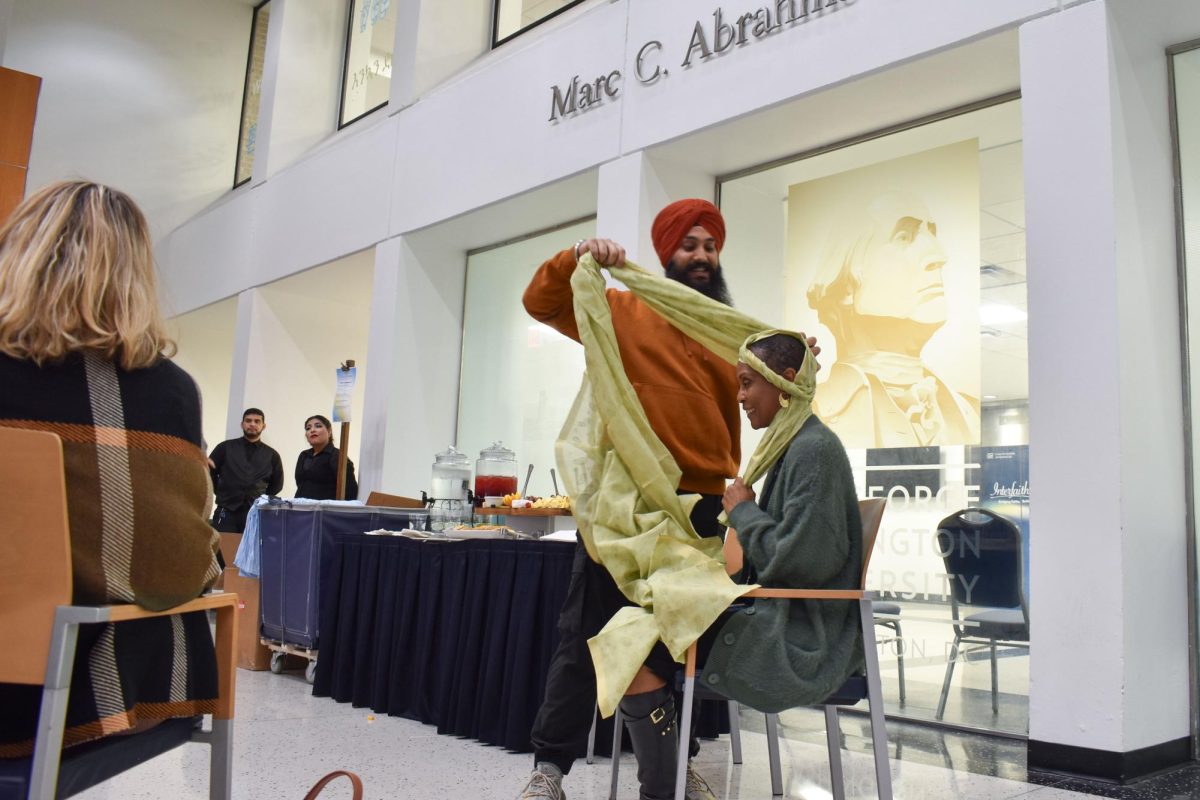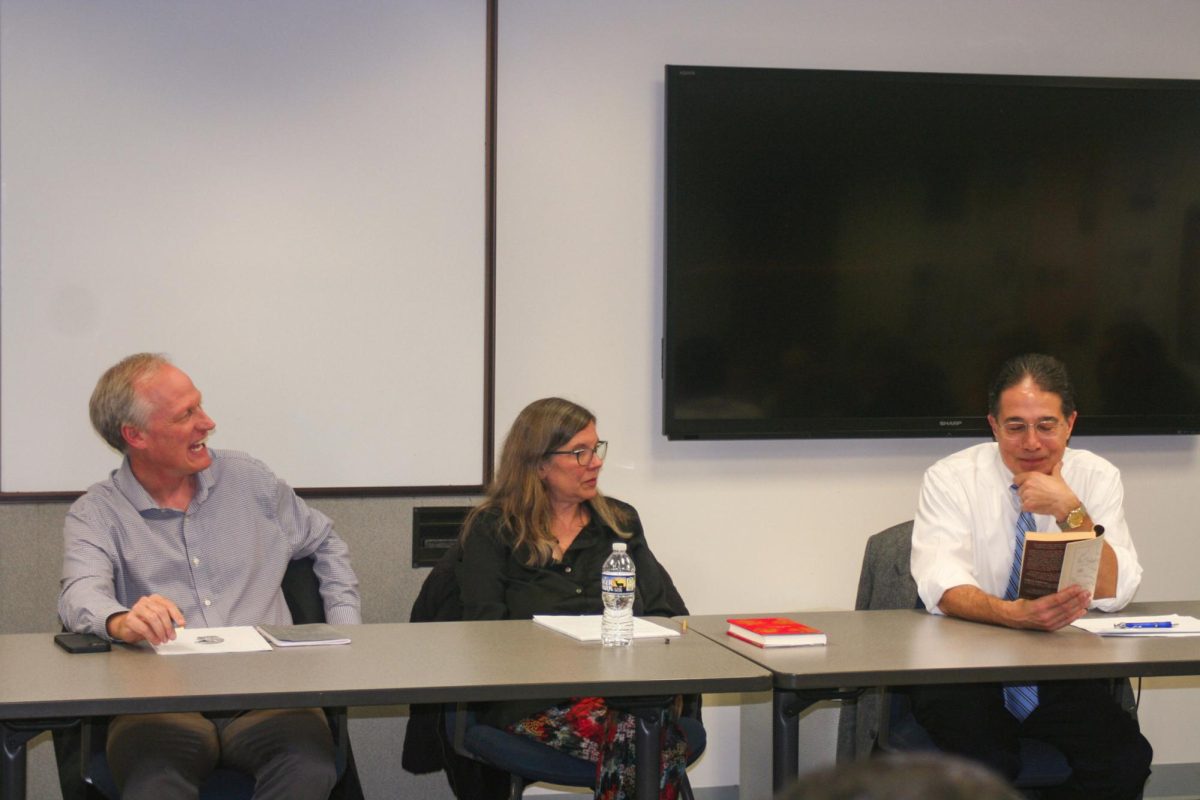When she was in high school, senior Melody Tajalli started a blog criticizing the Iranian government for its oppressive policies and human rights violations.
Years later, Tajalli has attended numerous demonstrations in D.C. and her hometown in Orange County, California where she has marched and chanted in support of women in the country. Since September, global protests against the Iranian regime have continued to gain momentum after the government killed a woman who allegedly wore her hijab incorrectly, sparking a movement against the regime.
Tajalli’s decision to closely align with the anti-government movement – and the threats government sympathizers have sent her since – means she can’t return to Iran, but she said she has no regrets.
“I would get threats from people in the community in Iran from people related to the regime, just all of that came with being outspoken about these events, but I don’t regret it at all,” she said. “I don’t regret it at all.”
Tajalli, an international affairs major, is among the students who have attended protests against the Islamic regime since September, when the country’s morality police – a security unit responsible for enforcing hijab mandates and other dress code rules in Iran – killed 22-year-old Jina Mahsa Amini for allegedly wearing her hijab incorrectly.
Tajalli said she has always been passionate about social activism, particularly about Iran because of her personal heritage.
“I’ve always viewed it as a privilege to be able to write about the things that are going on and to be able to amplify the voices of those who are having their voices shut down,” she said.
Tajalli said she has attended nearly every demonstration protesting against the Islamic regime in D.C. since September. She said protests in the District are more “pinpointed” toward urging U.S. officials to take action to remove the regime compared to the protests she has attended in Irvine, California, which she said aim to hook the attention of average citizens.
A demonstrator in Freedom Plaza Saturday said this past weekend was the 18th in a row with crowds of protesters gathering in the city, rallying behind their support for the people of Iran. One protest in October amassed thousands of people in attendance.
[gwh_image id=”1178890″ credit=”Sage Russell | Staff Photographer” align=”none” size=”embedded-img”][/gwh_image]
D.C.’s protests have earned appearances from celebrities like actor Brian Cox and Googoosh, an iconic Iranian singer and dissident banned from returning to Iran. Reza Pahlavi – the son of Mohammed Reza Pahlavi, the last Iranian shah before the 1979 revolution – also appeared at a D.C. protest in September.
Movement supporters have used social media to raise awareness of people who have been executed and killed at the hands of the Iranian government, like Mohammad Mehdi Karami, a 22 year old who was executed earlier this month after he was allegedly physically tortured by state officials and confessed to killing a member of the Basij – one of the Islamic Revolutionary Guard Corps. Karami was allegedly present at anti-regime protests last year, and protesters circulated a video of Karami’s parents urging state officials to commute his sentence.
“I think I definitely gained a much deeper understanding of how rooted this fight has been with these protests just because of the intergenerational impact,” Tajalli said. “You see people that are 80 years old in the streets protesting, but you also see super young kids like Kian Pirfalak that are being shot and killed.”
Plainclothes government officers allegedly shot and killed 9-year-old boy Kian Pirfalak in Izeh, Iran in November, setting off even more outrage against the regime. The Iranian regime has denied responsibility for the killing of Pirfalak, whose family accused the government of his killing.
Nicholas Bajestani, a freshman majoring in political science, said many protesters fear the Iranian government could use photographs to identify them and their families, potentially endangering them, so he’s worn face masks to both protests that he’s attended in D.C. He said he attended the protests despite the risk because he “needed to get involved” against the Islamic regime.
Bajestani said his family is from Iran, so he feels personally connected and compelled to join the movement.
“It’s the suffering of my people,” he said. “It’s very emotional, knowing that all these Iranians are collectively suffering due to, quite honestly, an oppressive regime.”
Bajestani said he would like to see more “wealthy, white” GW students share anti-regime posters and information and attend protests because their support can carry more influence.
He said the regime’s oppression of the Iranian people has stirred anti-government sentiment for years, and Amini’s death was the tragic catalyst to bring those feelings to the surface.
“I think it comes to the boiling point where they’re tired of it, and hundreds of years of being tired of it has just spurred on the movements,” he said.
[gwh_image id=”1178891″ credit=”Sage Russell | Staff Photographer” align=”none” size=”embedded-img”][/gwh_image]
Senior Kyle Anderson – a staff photographer for The Hatchet – said he made a short documentary for his documentary photography class titled “Woman, Life, Freedom,” named after the slogan that has become associated with the current movement. The documentary features three Iranian women – one of whom is Tajalli – who are advocating for an Iran without the regime.
He said he attended 17 protests since September to compile footage and understand the movement better for his documentary. He said the movement’s protesters maintain a stronger “persistence” that sets them apart from other protest movements he has covered, like demonstrations supporting Ukraine, which he said have lost participation numbers.
“These protests are reliably showing out the same people every single week, who remain committed to the cause, come out and fight for their rights and support the people back home,” he said.
Anderson said he hopes his documentary and other photography work at protests will make GW students more aware of the cause and encourage more support for Iranians fighting against the regime. He said he decided to spotlight these women because they have been participating in and leading protests, which is where he met them.
In the documentary, Anderson included a clip of protesters singing along to Shervin Hajipour’s song “Baraye,” which means “because of” in Farsi, has become a protest anthem for the movement. In the film, Tajalli talks about how music is a pivotal part of Iranian culture and how she has been using it to bring people together.
“I really wanted to highlight these young women because I think what they did to bring all those people together really was amazing,” Anderson said.
Nicole Sandrik-Arzadi, a freshman and the director of communications for the Iranian Students Association, said she has been working on a social media campaign since September to raise awareness about Iran’s history since the revolution and explain the uprisings for non-Iranians through Instagram infographics and Iranian activists’ voices.
“This movement really is focused primarily on a feminist perspective, and we cannot allow this moment to pass by and not stand up against human rights abuses and moments when women’s individual rights are being hindered upon,” she said.
She said IRSA is pushing to create a community for Iranian students who are experiencing “emotional pressure” due to the current political unrest. She said IRSA plans to host a music performance event at Lisner Auditorium in March called “The Sound of Freedom,” which she said will feature Iranian artists like Ehsan Karami and Mandana Khazraei.
“Our hearts go with the people of Iran, especially those who have lost children or sisters and brothers,” she said. “So our ultimate goal is to keep our community strong and to stand in solidarity.”








